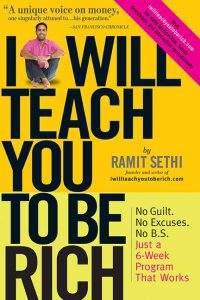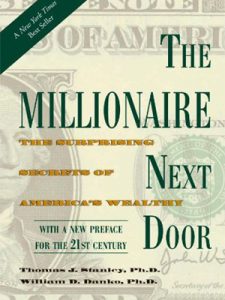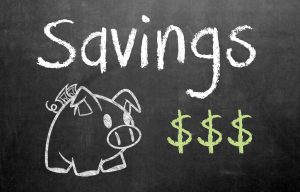My first and only job before joining the optical field was as a Starbucks barista. It was hard work but I enjoyed it and learned a lot. We had to manually and carefully load espresso into the machines back then. No push button lattes!
My first year of income led to a nice refund at tax time. I didn’t know anything about withholding rates or how to do tax bracket calculations. Someone told me just put 1 on the W9 and you’re good to go.
And I got a bigger and bigger tax refund each year. It was great! I thought the government was so nice.
But after learning about the tax code, I realized I was just giving up my present income so the government could have some more money during the year. I was giving them an interest free loan of a few thousand dollars every single year!
Now, I try to get my refund as close to zero as possible. At the same time, I accordingly increase my savings and debt payoff contributions. I’d rather have that money work for me throughout the year.
That being said, if you do receive a refund, you have to do something with the money.
Interesting Ways to Spend Your Refund
Here are 4 very interesting (and slightly questionable) ways to spend your tax refund:
1. Buy an Apple Watch Space Black Stainless Steel Case with Space Black Link Bracelet. Why spend hundreds of dollars on a run of the mill Apple Watch that tells the time and answers your phone? Spend a thousand and now you can do the same with a space black link bracelet. ($1,099)
2. Reserve the Tesla Model 3. There is no car more coveted than the Tesla. The Model 3 is a relatively affordable $35,000. Put down the $1,000 reservation fee and figure out how to pay for it later when it arrives in 2018.
3. Stay a few nights at a Trump Hotel. Stay 3 nights at the Trump Hotel in Central Park. Your friends will be so jealous. It is the greatest, I mean absolutely the greatest most incredible hotel out there. ($1,500)
4. Buy 50 shares of SNAP. SNAP is the ticker symbol for Snap Inc. (very creative). Snap is the parent company of Snapchat, which specializes in providing fun filters for our pictures. It recently became a publicly traded company and is trading at $19.54 a share as of March 17, 2017. Buy 50 shares and snap a picture of the confirmation email. ($977)
While those are four pretty interesting ways to spend your tax refund, let me propose an alternative. How about spend your tax refund on things that let interest work for you? This will make your money go the extra mile.
Interest-ing Ways to Spend Your Refund
1. Pay off your credit card debt. The best thing to do when it comes to credit card debt is to avoid it. The next best thing to do is to pay it off ASAP. Credit cards charge extremely high interest rates. The national average hovers around 15%, which is absurdly high.
This means that unless your investments are rocking and rolling and you’re getting a consistent 20%+ return year after year (which is nigh impossible), you need to get rid of that consumer debt FAST. This will free up cash flow faster and save you a lot of money on interest payments.
2. Increase your 401k contribution. I like this suggestion. I’m glad I thought of it. The reason I like it is because it’s the most hands off and effective way to spend your refund. If you already contribute to your 401k, just sign in to your account and increase your contribution percentage by a point or 2. You will not miss the money trust me.
Once the tax refund hits your checking account, do nothing! It’s as easy as that. Your increased contribution rate will take that extra money throughout the year and get it invested. You will save money on taxes and increase your retirement savings in one fell swoop.
3. Fund a Roth IRA. If you have maxed out your 401k, the next thing to focus on is your Roth IRA. Combined with a pre tax 401k, the Roth IRA will allow you to withdraw money tax free, providing tax diversification for the future. Because Donald Trump is the president so who knows what the future will bring?
The max contribution to a Roth IRA is $5,500 per year. A tax refund of a thousand or so will get you almost 20% of the way there. If you wish to max it out, you can set up automatic contributions for the rest of the year to get you there.
Another reason I like (love?) Roth IRA’s is that you can withdraw any contributions you’ve made to the account without penalty, as long as you’ve had the account for 5 years. So it can serve as a quasi emergency fund if needed.
4. Make an extra student loan or mortgage payment. Depending on which of these debts has a higher interest rate, you can add rocket fuel to the payoff time with a nice lump sum payment. Both of these debts can potentially give you some tax savings, so they’re not the WORST type of debt to have (see #1).
But debt is debt, and it should be paid off as soon as possible. Just make sure to let your lender know that you want the payment to be applied to your principal amount ONLY. Many lenders will pull a dirty trick of having it applied to interest first, which does nothing for you but everything for them. Which is why it’s better to be debt free than continuing to do business with greedy banks!
Spend Your Refund Wisely
You can certainly spend your refund on the things on the first list. It would make for a nice story and talking point. But with all material things, the glamour fades very quickly. And you’re right back to where you started financially.
Spend your refund on the second list, however, and you will provide a nice boost towards financial freedom. In the end, that is truly what we’re all looking for. Once you reach there, you can spend all the nights you wish at Trump Tower.















